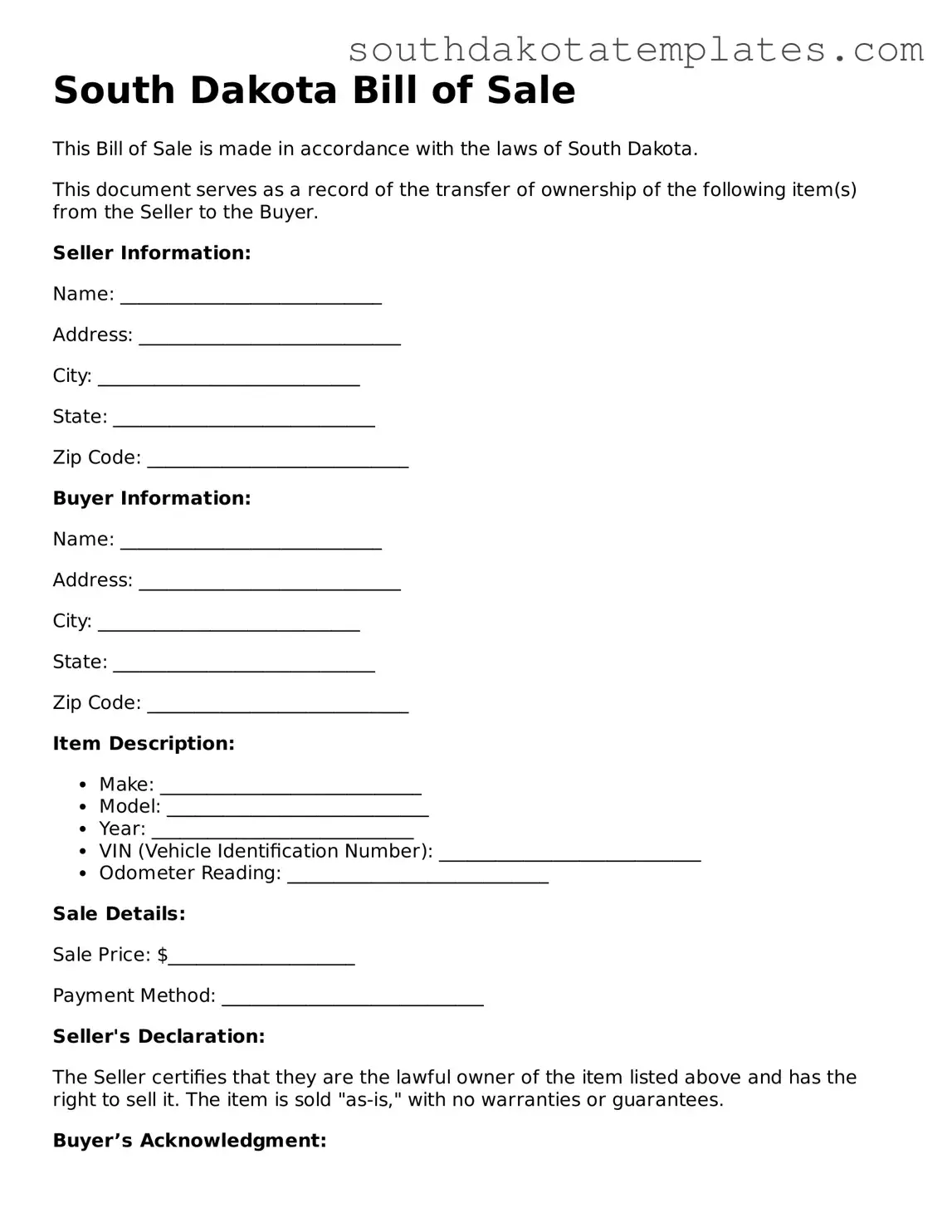Free South Dakota Bill of Sale Document
The South Dakota Bill of Sale is a legal document that serves as proof of the transfer of ownership of personal property from one party to another. This form outlines essential details such as the buyer and seller's information, a description of the item being sold, and the sale price. To ensure a smooth transaction, it is important to fill out this form accurately and completely.
Ready to complete your Bill of Sale? Click the button below to get started!
Get Bill of Sale
